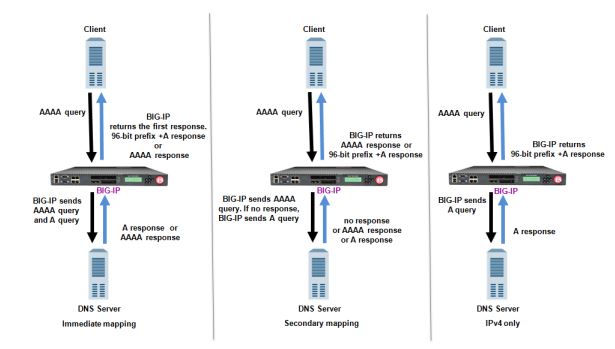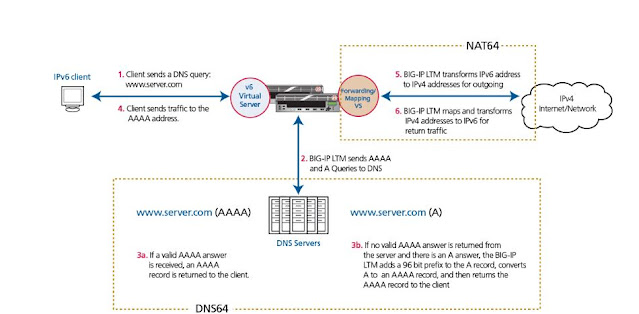--> Most of the ISP's are providing IPV6 addresses to the mobile clients for Internet Access.
--> One thing we need to understand is the clients who have IPv6 addresses cannot communicate with the servers/devices that have IPv4 addresses.
--> Still Most of the web servers/devices which are hosted on the Internet running on IPv4 to provide content to the clients/users.
--> We need to find a solution that allows the communication between the IPv6 clients and IPv4 servers.
--> As you are aware that IPV6 and IPV4 are not compatible with each other, The IPv6 client will only understand the IPV6 address.
--> The first thing the client uses is the DNS to get the address of the server whenever the client tries to access any application.
--> We need to provide the IPV6 address as a DNS response to the client for the servers which are running with IPV4 addresses.
--> DNS64 is a solution that provides IPV6 address as a DNS response to the client by converting IPV4 address into IPv6 address.
--> As you know the IPV6 address is of 128 bits and IPV4 address is only 32 bits, The DNS64 adds 96 bits of value to IPV4 address to convert it to IPV6 address.
--> Till now, We did solve only one issue is providing the IPv6 DNS response to the IPv6 enabled clients using the DNS64 Solution.
--> Once the IPv6 Client gets the IPv6 address as the response then the client tries to connect to the IPv6 address for accessing the application via Web Server.
--> However the IPV4 enabled Web Server does not understand the IPv6 address so the communication will not establish between the IPv6 Clients and IPV4 Servers.
--> We need to use one more technology which is known as NAT64 in addition to DNS64 to allow the communication of the IPv6 clients with IPV4 Enabled Servers.
--> A NAT64 Enabled device receives the connections from IPv6 clients and then converts the IPv6 address to IPv4 address so that it can communicate with IPv4 enabled servers.
--> We can use BIG IP LTM/DNS to implement DNS64/NAT64 functionality.
Reference: https://www.f5.com/content/dam/f5/corp/global/pdf/deployment-guides/f5-large-scale-nat-dg.pdf








Great article. You mentioned at the end that LTM/DNS is needed. Does a customer needs the BIG-IP® system CGNAT module to do this also?
ReplyDelete